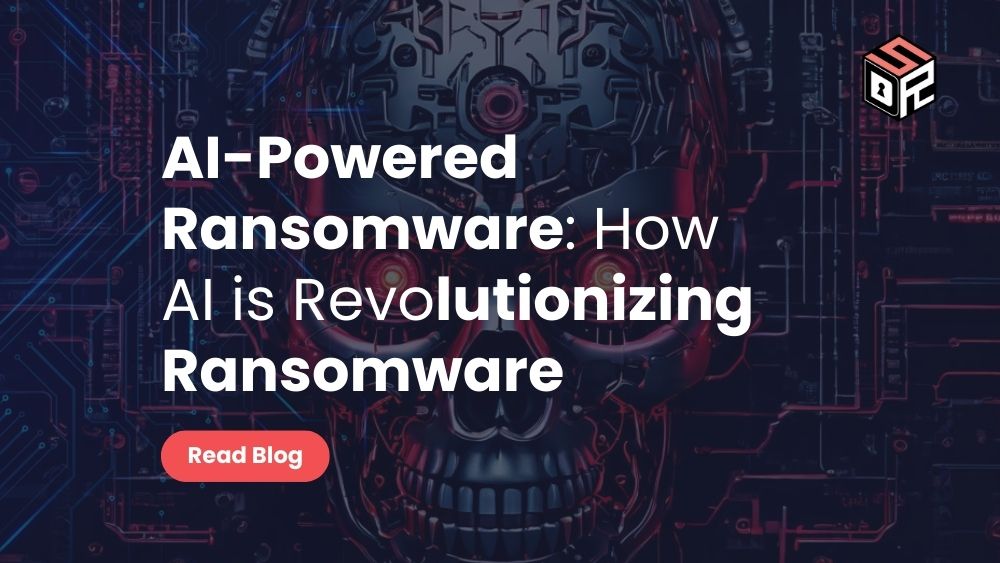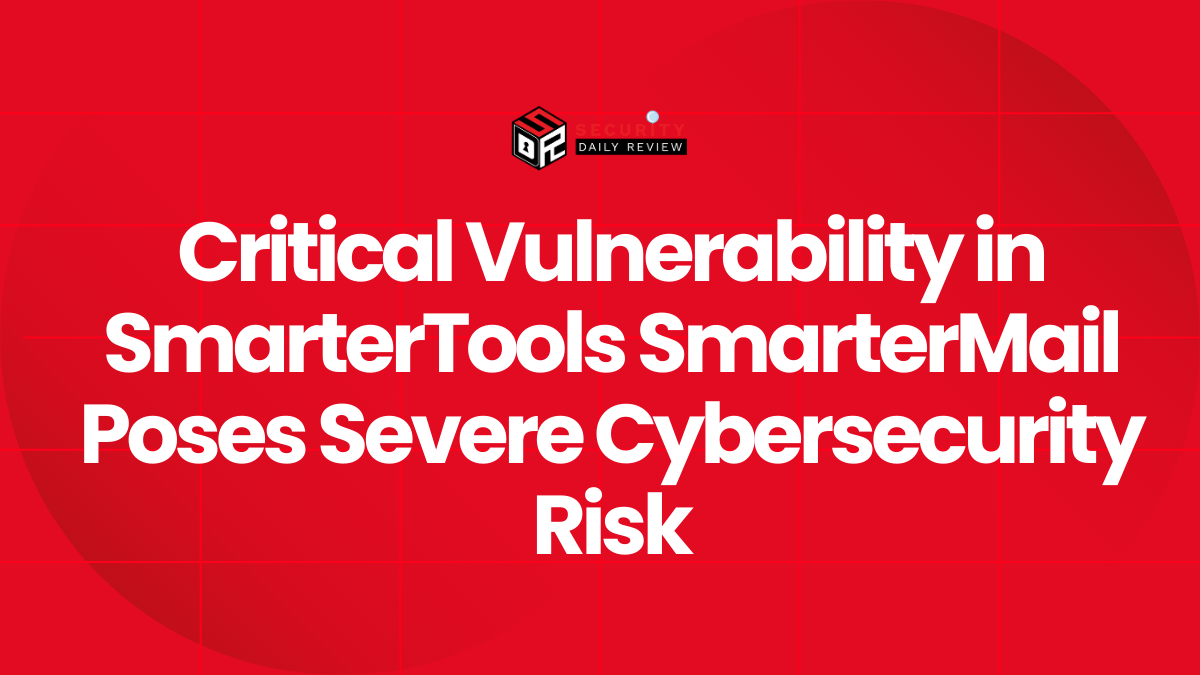Ransomware is getting smarter thanks to artificial intelligence (AI). These AI-powered attacks can target vulnerabilities with pinpoint accuracy and spread faster than ever before. But don’t panic! This blog will equip you with the knowledge to fight back. We’ll explore how AI is changing the ransomware landscape and dive deep into building a data resilience strategy.
How AI is Escalating Ransomware Attacks
Artificial intelligence techniques are now leveraged by cybercriminals to carry out increasingly sophisticated ransomware attacks. By applying AI and machine learning, ransomware actors are adapting their tactics in real-time, automating various stages of the attack process, and precisely targeting vulnerabilities in existing security defenses.
AI powered ransomware has the capability to analyze vast amounts of data and customize its strategies based on what it learns about potential victims and their environments.
A recent report by the UK’s National Cyber Security Centre (NCSC) has warned that attackers are taking advantage of AI to evolve the intensity of their ransomware campaigns.
Known ransomware variants like APT28 have demonstrated their ability to use large language models (LLMs) for intricate reconnaissance and social engineering methods aimed at evading detection and stealing large amounts of sensitive data.
AI Empowers Ransomware with New and Dangerous Capabilities
Here are some new capabilities that AI brings to ransomware attacks:
- Adapting and Evolving Code in Real-Time: LLMs allow ransomware to dynamically alter its source code as needed to bypass detection rules. By modifying malware patterns, AI ransomware can stay one step ahead of security analysts.
- Automating the Attack Process: AI automates stages like reconnaissance, vulnerability targeting, and encryption, speeding up the attack cycle and reducing reliance on human operators. This increases the scale and efficiency of operations.
- Precision Targeting of Existing Vulnerabilities: By leveraging AI for in-depth reconnaissance, ransomware precisely exploits even obscure technical flaws and misconfigurations that traditional defenses may miss. For example, zero-day vulnerabilities.
- Crafting Highly Targeted Phishing Lures: Machine Learning (ML) algorithms can analyze profiles to customize phishing emails and ransom demands. AI Deepfakes and other synthetic media may also fool victims into disclosing their credentials for legitimate sites.
- Highly Informed Follow-On Attacks: Parsing publicly available data using multimodal language models helps ransomware actors gain deeper understanding of targets for technical specs to intensify subsequent attacks.
AI on the Offense, But You Can Defend: Building Multi-Layered Defenses Against Evolving Ransomware
As AI continues to empower ransomware, the consequences of ransomware attacks have grown increasingly severe. Successful intrusions can now potentially lead to massive financial losses from data encryption and exfiltration, serious reputational damage, and even operational disruptions. In some cases, paying ransoms may be the only option available for recovering data.
This evolving threat landscape demands well-architected, multi-layered cybersecurity defenses.
Invest in Tiered Data Resiliency
A tiered, data-resilient security architecture incorporating air-gapped and immutable backups with replication is essential for achieving robust resiliency against any cyber threat.
Backups stored on air-gapped media completely isolated from networks prevent ransomware from remotely encrypting or deleting these copies. Regularly replicating data to air-gapped systems guarantees an uncompromised recovery source even if on-network storage suffers an intrusion.
Implementing immutable filesystems for backup data disallows any modification or deletion of files once written. Storage technologies like WORM (Write Once Read Many) media commit backups immutably and don’t allow changes.
Immutable backups foil ransomware attempts to encrypt or remove historical backup copies. Enterprises regain the ability to roll back to clean backup images long before an incident.
These additional layers establish highly resilient, tamper-proof sources to retrieve data from ransomware attacks that compromises primary storage.
Leverage AI for Threat Detection and Response
Deploying AI/ML-based security analytics, endpoint monitoring and network traffic analysis can help proactively identify and quickly mitigate ransomware before damage.
AI/ML-powered endpoint detection and response solutions identify anomalies in real-time from encrypted or exfiltrated files and blocked processes.
Prioritize Awareness and Training for Employees
User education remains critical since phishing is a common initial infection vector. Training employs to detect phishing strengthens your organization’s ‘human firewall’ against social engineering attempts.
Organizations should implement regular security awareness programs to keep ransomware risks and prevention techniques top of mind. Prioritizing this human-focused defense enhances the overall resilience of technical controls and fortifies the last line of protection against AI powered cyber attacks.
Collaboration is the Key for a More Informed CyberSecurity Strategy
Information sharing between industry, law enforcement and security experts is needed to coordinate responses, develop best practices and maximize collective defense strategies.
Industry collaboration and intelligence from law enforcement aids in rapidly addressing new ransomware variants and attack patterns.
Use Network Segmentation to Prevent Lateral Movement
Strict network access controls and micro-segmentation across environments disrupts lateral movement when ransomware infects parts of the LAN.
By modernizing protection strategies and working together, the risks from AI powered ransomware attacks can be substantially reduced. But organizations must act now before these threats escalate further.
AI Ransomware Risks: Key Takeaways
- Ransomware Attacks Have Increased in Sophistication: AI enables highly sophisticated, targeted and evasive ransomware variants with expanded capabilities. Outdated security approaches are insufficient.
- AI Powered Ransomware Will Increase Attack Frequency and Impact: AI automates and accelerates the attack process, allowing ransomware to spread more rapidly and extensively and impact more victims at once.
- Unprecedented Large Scale Data Security and Privacy Breaches: Beyond encryption for ransom, AI ransomware may also facilitate large-scale data thefts and privacy violations through exfiltrated data profiles.
- Mega System and Network Disruptions: Widespread encryption from a potent AI ransomware strain may induce service outages and collapse critical infrastructure systems on a scale that has no precedent before.
- Increased Financial and Reputational Damages: The costs of downtime, ransom payments, customer loss from data leaks and rebuilding trust will be extraordinarily high for businesses and organizations targeted by AI powered ransomware attacks.
Conclusion
As AI continues empowering ransomware actors, the attacks they carry out will only become more potent over time. But by acknowledging these strategic risks, understanding the evolving threat landscape and implementing a multi layered data resiliency model, organizations can substantially strengthen their protection against the scourge of AI powered ransomware. With preparation and vigilance, businesses can withstand these threats now and in the years ahead.
FAQs
What are AI powered cyber attacks?
AI powered cyber attacks leverage artificial intelligence technologies like machine learning to enhance the capabilities of malware and make cybercrime more automated, targeted, and difficult to detect. Attackers use AI to rapidly evolve malware, customize phishing schemes, find technical vulnerabilities, and evade existing security systems.
Can AI detect ransomware?
Yes, AI and machine learning can be used to help detect ransomware and other cyber threats. Many next-generation security solutions utilize AI/ML models to analyze patterns in network traffic, file behaviors, system logs, and other data to recognize the signatures of known and unknown ransomware variants. AI excels at automating complex anomaly detection tasks at massive scale, helping identify subtle signs of a ransomware infection that might elude humans or standard rules-based tools.
What is AI automated ransomware?
AI automated ransomware refers to advanced malware variants that incorporate machine learning algorithms to fully automate the attack process from start to finish. Using AI, ransomware can perform tasks like vulnerability scanning, exploit generation, file encryption, and crypto-locking without direct human initiation or control. It represents a new form of “self-driving” ransomware that leverages AI to maximize efficiency and evade scrutiny through autonomous behavior. Defending against AI automated ransomware requires multidimensional technical and procedural resilience strategies.
Why is AI making ransomware more dangerous?
AI allows ransomware to automatically perform complex tasks like reconnaissance, evolve evasion techniques in real-time, and precisely target technical vulnerabilities. It enables attacks at an immense scale and speed that outdated defenses struggle to contain.
What are some examples of how AI enhances ransomware?
AI powers abilities like real-time code modification to avoid detection, mass phishing customization, in-depth scans for obscure entry points, and metadata analysis to intensify follow-up campaigns. It automates the process end-to-end while empowering deeply targeted, sophisticated tricks.
What are the risks of AI ransomware to organizations?
Consequences include potentially catastrophic data loss, heavy financial damages from downtime and ransom payments, severe reputational injury, and even critical infrastructure outages. AI bolsters ransomware’s profitability, making the threat ongoing and escalating over time.
What’s the best way to recover from an AI ransomware attack?
Rely on offline, tamper-proof data immunity solutions storing pristine backups in isolated “data bunkers.” These resilient archives immunize critical assets and let you roll back to pre-intrusion copies with minimal downtime. Paying ransoms only encourages further criminal activity.
How can organizations collaborate on combating AI ransomware?
Join information sharing communities and task forces to benefit from coordinated threat intelligence, best practice dissemination and joint policy work. Prioritize maintaining strong ties between industry, government researchers and law enforcement to streamline responses and strengthen the collective defense over time. Collaborate with CISA and stay updated with their security advisories.
AI powered ransomware is now smarter and more dangerous than ever – but data resilience can keep you protected. As the integration of AI provides ransomware with amplified capabilities, learn how to future-proof your organization’s resilience against both current and emerging strains.
How AI is Escalating Ransomware Attacks
Artificial intelligence techniques are now leveraged by cybercriminals to carry out increasingly sophisticated ransomware attacks. By applying AI and machine learning, ransomware actors are adapting their tactics in real-time, automating various stages of the attack process, and precisely targeting vulnerabilities in existing security defenses.
AI powered ransomware has the capability to analyze vast amounts of data and customize its strategies based on what it learns about potential victims and their environments.
A recent report by the UK’s National Cyber Security Centre (NCSC) has warned that attackers are taking advantage of AI to evolve the intensity of their ransomware campaigns.
Known ransomware variants like APT28 have demonstrated their ability to use large language models (LLMs) for intricate reconnaissance and social engineering methods aimed at evading detection and stealing large amounts of sensitive data.
AI Empowers Ransomware with New and Dangerous Capabilities
Here are some new capabilities that AI brings to ransomware attacks:
Adapting and Evolving Code in Real-Time
LLMs allow ransomware to dynamically alter its source code as needed to bypass detection rules. By modifying malware patterns, AI ransomware can stay one step ahead of security analysts.
Automating the Attack Process
AI automates stages like reconnaissance, vulnerability targeting, and encryption, speeding up the attack cycle and reducing reliance on human operators. This increases the scale and efficiency of operations.
Precision Targeting of Existing Vulnerabilities
By leveraging AI for in-depth reconnaissance, ransomware precisely exploits even obscure technical flaws and misconfigurations that traditional defenses may miss. For example, zero-day vulnerabilities.
Crafting Highly Targeted Phishing Lures
ML algorithms can analyze profiles to customize phishing emails and ransom demands. AI Deepfakes and other synthetic media may also fool victims into disclosing their credentials for legitimate sites.
Highly Informed Follow-On Attacks
Parsing publicly available data using multimodal language models helps ransomware actors gain deeper understanding of targets for technical specs to intensify subsequent attacks.
Thus, AI powered ransomware has achieved new level of sophistication, speed, and scale that poses significantly increased risks to organizations and critical infrastructure.
AI Powered Ransomware Threats Demand Multi Layered Defenses
As AI continues to empower ransomware, the consequences of ransomware attacks have grown increasingly severe. Successful intrusions can now potentially lead to massive financial losses from data encryption and exfiltration, serious reputational damage, and even operational disruptions. In some cases, paying ransoms may be the only option available for recovering data.
This evolving threat landscape demands well-architected, multi-layered cybersecurity defenses.
Invest in Tiered Data Resiliency
A tiered, data-resilient security architecture incorporating air-gapped and immutable backups with replication is essential for achieving robust resiliency against any cyber threat.
Backups stored on air-gapped media completely isolated from networks prevent ransomware from remotely encrypting or deleting these copies. Regularly replicating data to air-gapped systems guarantees an uncompromised recovery source even if on-network storage suffers an intrusion.
Implementing immutable filesystems for backup data disallows any modification or deletion of files once written. Storage technologies like WORM (Write Once Read Many) media commit backups immutably and don’t allow changes.
Immutable backups foil ransomware attempts to encrypt or remove historical backup copies. Enterprises regain the ability to roll back to clean backup images long before an incident.
These additional layers establish highly resilient, tamper-proof sources to retrieve data from ransomware attacks that compromises primary storage.
Leverage AI for Threat Detection and Response
Deploying AI/ML-based security analytics, endpoint monitoring and network traffic analysis can help proactively identify and quickly mitigate ransomware before damage.
AI/ML-powered endpoint detection and response solutions identify anomalies in real-time from encrypted or exfiltrated files and blocked processes.
Prioritize Awareness and Training for Employees
User education remains critical since phishing is a common initial infection vector. Training employs to detect phishing strengthens your organization’s ‘human firewall’ against social engineering attempts.
Organizations should implement regular security awareness programs to keep ransomware risks and prevention techniques top of mind. Prioritizing this human-focused defense enhances the overall resilience of technical controls and fortifies the last line of protection against AI powered cyber attacks.
Collaboration is the Key for a More Informed CyberSecurity Strategy
Information sharing between industry, law enforcement and security experts is needed to coordinate responses, develop best practices and maximize collective defense strategies.
Industry collaboration and intelligence from law enforcement aids in rapidly addressing new ransomware variants and attack patterns.
Use Network Segmentation to Prevent Lateral Movement
Strict network access controls and micro-segmentation across environments disrupts lateral movement when ransomware infects parts of the LAN.
By modernizing protection strategies and working together, the risks from AI powered ransomware attacks can be substantially reduced. But organizations must act now before these threats escalate further.
AI Ransomware Risks: Key Takeaways
Ransomware Attacks Have Increased in Sophistication
AI enables highly sophisticated, targeted and evasive ransomware variants with expanded capabilities. Outdated security approaches are insufficient.
AI Powered Ransomware Will Increase Attack Frequency and Impact
AI automates and accelerates the attack process, allowing ransomware to spread more rapidly and extensively and impact more victims at once.
Unprecedented Large Scale Data Security and Privacy Breaches
Beyond encryption for ransom, AI ransomware may also facilitate large-scale data thefts and privacy violations through exfiltrated data profiles.
Mega System and Network Disruptions
Widespread encryption from a potent AI ransomware strain may induce service outages and collapse critical infrastructure systems on a scale that has no precedent before.
Increased Financial and Reputational Damages
The costs of downtime, ransom payments, customer loss from data leaks and rebuilding trust will be extraordinarily high for businesses and organizations targeted by AI powered ransomware attacks.
Conclusion
As AI continues empowering ransomware actors, the attacks they carry out will only become more potent over time. But by acknowledging these strategic risks, understanding the evolving threat landscape and implementing a multi layered data resiliency model, organizations can substantially strengthen their protection against the scourge of AI powered ransomware. With preparation and vigilance, businesses can withstand these threats now and in the years ahead.
FAQs
What are AI powered cyber attacks?
AI powered cyber attacks leverage artificial intelligence technologies like machine learning to enhance the capabilities of malware and make cybercrime more automated, targeted, and difficult to detect. Attackers use AI to rapidly evolve malware, customize phishing schemes, find technical vulnerabilities, and evade existing security systems.
Can AI detect ransomware?
Yes, AI and machine learning can be used to help detect ransomware and other cyber threats. Many next-generation security solutions utilize AI/ML models to analyze patterns in network traffic, file behaviors, system logs, and other data to recognize the signatures of known and unknown ransomware variants. AI excels at automating complex anomaly detection tasks at massive scale, helping identify subtle signs of a ransomware infection that might elude humans or standard rules-based tools.
What is AI automated ransomware?
AI automated ransomware refers to advanced malware variants that incorporate machine learning algorithms to fully automate the attack process from start to finish. Using AI, ransomware can perform tasks like vulnerability scanning, exploit generation, file encryption, and crypto-locking without direct human initiation or control. It represents a new form of “self-driving” ransomware that leverages AI to maximize efficiency and evade scrutiny through autonomous behavior. Defending against AI automated ransomware requires multidimensional technical and procedural resilience strategies.
Why is AI making ransomware more dangerous?
AI allows ransomware to automatically perform complex tasks like reconnaissance, evolve evasion techniques in real-time, and precisely target technical vulnerabilities. It enables attacks at an immense scale and speed that outdated defenses struggle to contain.
What are some examples of how AI enhances ransomware?
AI powers abilities like real-time code modification to avoid detection, mass phishing customization, in-depth scans for obscure entry points, and metadata analysis to intensify follow-up campaigns. It automates the process end-to-end while empowering deeply targeted, sophisticated tricks.
What are the risks of AI ransomware to organizations?
Consequences include potentially catastrophic data loss, heavy financial damages from downtime and ransom payments, severe reputational injury, and even critical infrastructure outages. AI bolsters ransomware’s profitability, making the threat ongoing and escalating over time.
What’s the best way to recover from an AI ransomware attack?
Rely on offline, tamper-proof data immunity solutions storing pristine backups in isolated “data bunkers.” These resilient archives immunize critical assets and let you roll back to pre-intrusion copies with minimal downtime. Paying ransoms only encourages further criminal activity.
How can organizations collaborate on combating AI ransomware?
Join information sharing communities and task forces to benefit from coordinated threat intelligence, best practice dissemination and joint policy work. Prioritize maintaining strong ties between industry, government researchers and law enforcement to streamline responses and strengthen the collective defense over time. Collaborate with CISA and stay updated with their security advisories.









